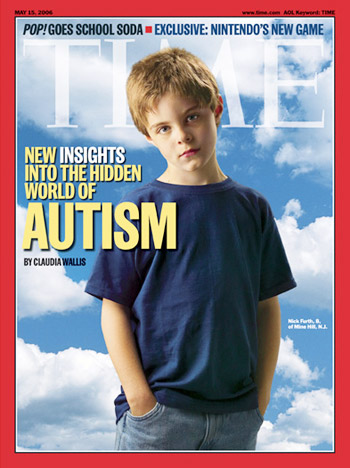Everyone in a private practice setting who runs with children or adults is going to suffer their own perception on how
Attention Deficit Hyperactivity Disorder - ADD or ADHD - should be diagnosed. Some clinics take the perspective that "more is good," and will recommend a large battery of tests, often losing many thousands of dollars. Other clinics, typically amid hurried physicians, will just give a brief display scales to the parents and then make a quick diagnosis and prescribe treatment, normally a medication. Unfortunately neither of these kinds of extremes is in the patient's best interest. If you are the parent of a child or teenager who is struggling in school, and perhaps at livlihood in general, you should be familiar with what causes this disorder we clamor Attention Deficit Hyperactivity Disorder.
First, the symptom of inattention. The person has trouble with focusing on the right thing, long enough to get it done. A lot of people, including his parents, complain that he just doesn't seem to listen when spoken to. Because of not sustaining attention, or because of acting like a "space cadet," he doesn't finish his chores or homework. He can't keep his mind on what he's doing for very long unless it is very exciting, or very entertaining, and he doesn't pay close attention to what he's doing, so he makes a lot of careless mistakes. Video games are an exception because they give immediate feedback, they are exciting, and they are fun. Chores and homework are not.The inattention is seen most with homework, chores, and other boring things that you want him to do. He's really disorganized. Most commonly this is seen in spending three hours to finally finish his homework, then losing it at school (it's in his backpack), or forgetting to turn it in. He really tries to avoid doing homework or chores. He gets distracted easily, or pays attention to the wrong thing at the wrong time. He is often forgetful and has to be reminded to do things often. The great majority of people diagnosed with ADHD have problems with inattention.
The next classic symptom is poor impulse control, or a lack of self-control. Not all people with ADHD have this problem, but many do. He often blurts out answers in class.
He can't wait his turn when he is playing games or at school, and pushes ahead in lines. He interrupts others a lot, he just doesn't wait well. He tends to do things without thinking about them first, and says things he doesn't think about first. He does not consider the consequences of his actions. About half of those diagnosed with ADHD are hyperactive. Since the word "hyperactive" is in the name itself you might think that everyone with the disorder must be hyperactive, but such is not the case. There are probably five or six types of ADHD, each one different from the other in terms of brain function. You can learn more about the different types of ADHD at the
ADHD Information Library. How do you know if your child or teen is hyperactive? He has happy hands and feet which fidget and squirm a lot. He just can't stay in his seat for very long when he's supposed to at school or the dinner table. He may run around too much, or climb on things he's not supposed to. He is often just too loud. He is "On the go" as if he is "driven by a motor." He talks too much. He leaves footprints across the ceiling. It is important to note that at least some of these symptoms must have been seen before the age of seven. Also, that at least some of the symptoms are seen both at home and at school.
Also, that these behaviors are really a problem. Not just a little bit, but a lot. Please be aware that there are several reasons why a child could have these symptoms besides Attention Deficit Hyperactivity Disorder. For example, thyroid problems, depression, anxiety disorders, hearing problems, and so on. Please do not attempt to "diagnose" your child. See your doctor, or go to a qualified mental health professional. This web site is no substitute for talking with an expert. Keep in mind that over-diagnosis of Attention Deficit Hyperactivity Disorder is a big problem. There are some children who are diagnosed as having ADHD that do not have it. It is not uncommon for someone with depression, or anxiety, specific learning disabilities, early onset bi-polar disorder, or Tourette's Syndrome, to be diagnosed as Attention Deficit Hyperactivity Disorder.
This is often the result of a diagnostic "work-up" which is too brief and does not take into account the many reasons why a child might be inattentive, impulsive, or over-active. But over-diagnosis of Attention Deficit Hyperactivity Disorder is not the only problem. Under-diagnosis of Attention Deficit Hyperactivity Disorder is also a problem. This happens most often in the school setting where the school psychologist writes his report perfectly describing an individual with ADHD, then refuses to use the label "
Attention Deficit Hyperactivity Disorder" in his report anywhere.
It also often happens in therapist's offices where the therapist is not familiar with the neurological aspects of Attention Deficit Hyperactivity Disorder, and only sees the characteristic behaviors as "acting out behaviors" due to family problems, rebelliousness, and so on. Therapists operating entirely from a "Family Systems" orientation are especially at risk for making this mistake, as I admit I did for my first two years in practice.
Some studies suggest that only one out of three people who have Attention Deficit Hyperactivity Disorder will ever get help. Two out of three people who have ADHD will never receive a diagnosis or treatment. They will never really know what it is that's bothered them through their life. So we have two problems. One is the over-diagnosis and the other is the under-diagnosis of Attention Deficit Disorder. First, the symptom of inattention. The person has trouble with focusing on the right thing, long enough to get it done. A lot of people, including his parents, complain that he just doesn't seem to listen when spoken to. Because of not sustaining attention, or because of acting like a "space cadet," he doesn't finish his chores or homework. He can't keep his mind on what he's doing for very long unless it is very exciting, or very entertaining, and he doesn't pay close attention to what he's doing, so he makes a lot of careless mistakes. Video games are an exception because they give immediate feedback, they are exciting, and they are fun. Chores and homework are not.The inattention is seen most with homework, chores, and other boring things that you want him to do.
He's really disorganized. Most commonly this is seen in spending three hours to finally finish his homework, then losing it at school (it's in his backpack), or forgetting to turn it in. He really tries to avoid doing homework or chores. He gets distracted easily, or pays attention to the wrong thing at the wrong time. He is often forgetful and has to be reminded to do things often. The great majority of people diagnosed with ADHD have problems with inattention. The next classic symptom is poor impulse control, or a lack of self-control. Not all people with ADHD have this problem, but many do.
He often blurts out answers in class.
He can't wait his turn when he is playing games or at school, and pushes ahead in lines. He interrupts others a lot, he just doesn't wait well. He tends to do things without thinking about them first, and says things he doesn't think about first. He does not consider the consequences of his actions. About half of those diagnosed with ADHD are hyperactive. Since the word "hyperactive" is in the name itself you might think that everyone with the disorder must be hyperactive, but such is not the case. There are probably five or six types of ADHD, each one different from the other in terms of brain function. You can learn more about the
different types of ADHD at the ADHD Information Library. How do you know if your child or teen is hyperactive?
He has happy hands and feet which fidget and squirm a lot. He just can't stay in his seat for very long when he's supposed to at school or the dinner table. He may run around too much, or climb on things he's not supposed to. He is often just too loud. He is "On the go" as if he is "driven by a motor." He talks too much. He leaves footprints across the ceiling. It is important to note that at least some of these symptoms must have been seen before the age of seven. Also, that at least some of the symptoms are seen both at home and at school. Also, that these behaviors are really a problem. Not just a little bit, but a lot. Please be aware that there are several reasons why a child could have these symptoms besides Attention Deficit Hyperactivity Disorder. For example, thyroid problems, depression, anxiety disorders, hearing problems, and so on. Please do not attempt to "diagnose" your child. See your doctor, or go to a qualified mental health professional. This web site is no substitute for talking with an expert. Keep in mind that over-diagnosis of Attention Deficit Hyperactivity Disorder is a big problem. There are some children who are diagnosed as having ADHD that do not have it. It is not uncommon for someone with depression, or anxiety, specific learning disabilities, early onset bi-polar disorder, or Tourette's Syndrome, to be diagnosed as Attention Deficit Hyperactivity Disorder.
This is often the result of a diagnostic "work-up" which is too brief and does not take into account the many reasons why a child might be inattentive, impulsive, or over-active. But over-diagnosis of
Attention Deficit Hyperactivity Disorder is not the only problem. Under-diagnosis of Attention Deficit Hyperactivity Disorder is also a problem. This happens most often in the school setting where the school psychologist writes his report perfectly describing an individual with ADHD, then refuses to use the label "Attention Deficit Hyperactivity Disorder" in his report anywhere. Don't let your love ones suffer anymore! Lead them out through Adhd Diagnosing program now!












